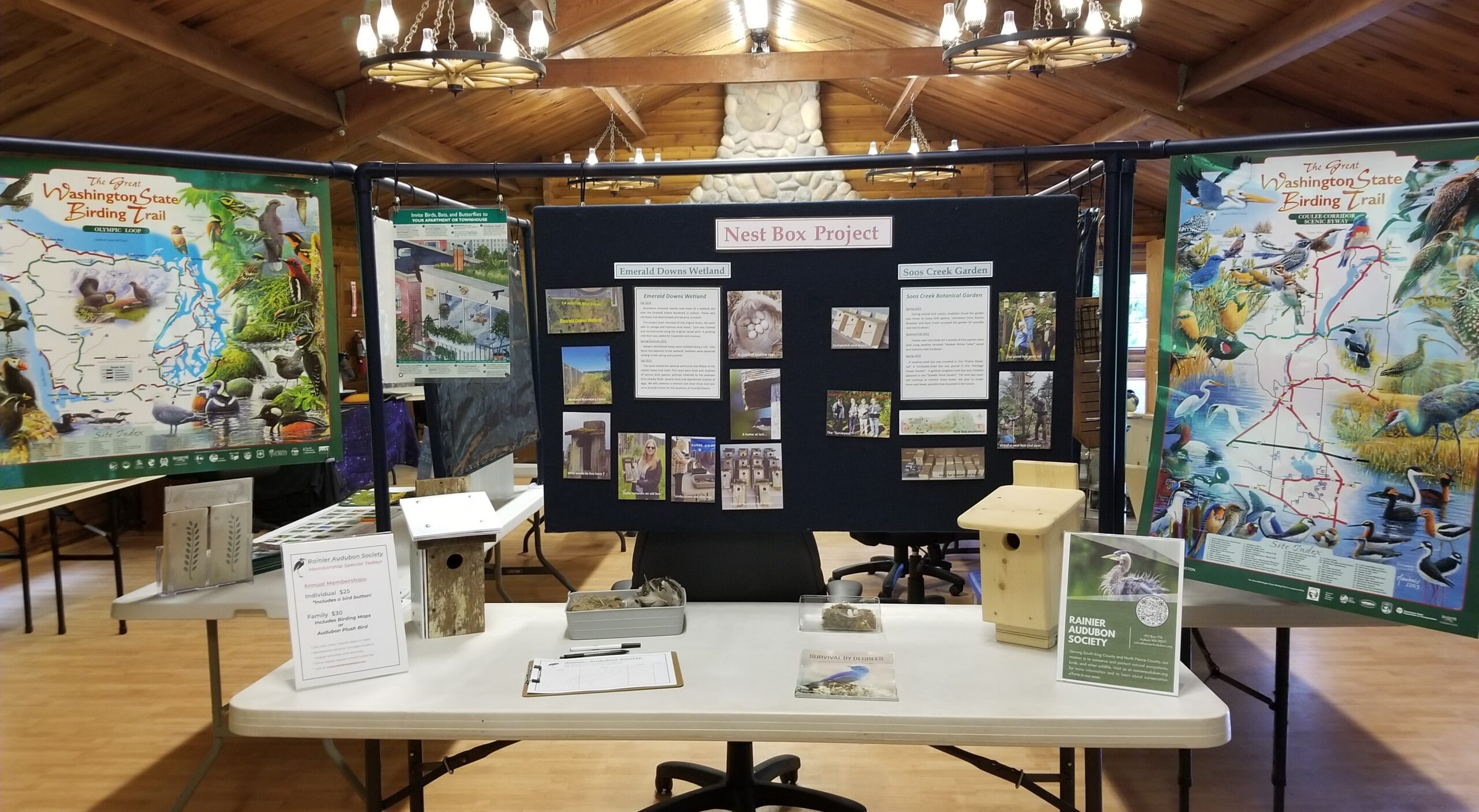

Mewsings from Millie – November 2024

(Reprinted with permission from the Burien Wild Birds Unlimited store.)
People are always interested in hummingbirds and some express surprise when told that the Anna’s Hummingbird stays here through the winter. Of course, that makes me wonder why those silly birds do that? Why stay here is cold, shivery Washington when they could be hanging in warm, sunny southern California?
I happened to paw through an edition of BirdWatching magazine and came across an article by wildlife ecologist and photographer, Gregory A. Green, that speaks to that question.
Mr. Green said that prior to the 1930s the Anna’s Hummingbird nested no further north than San Francisco Bay. By 1944 they had moved north of the Oregon border, and in 1964 arrived in the Seattle area. Now they breed as far north as Vancouver Island and southeast Alaska.
The bird’s core range is in the Santa Monica Mountains of southern California where they feed on Currant or Gooseberry shrubs that bloom at just about any time of the year. They may flower at different elevations at different times but still the little hummingbirds don’t have to fly very far to find food.
So why head north?
Well, back in the 1870s a plant was introduced from Australia called the Blue Gum Eucalyptus. It was used for shade, lumber, railroad ties, and orange grove windbreaks. It naturalized in the coastal areas of southern California and the San Francisco Bay region, and soon the nectar-rich blooms that flower in winter became a favorite of two wildlife natives, the Anna’s Hummingbird and the Monarch Butterfly.
The Anna’s Hummingbird could now live all year around in the lowlands of southern California and later moved north to the Bay Area as the Blue Gum groves matured.
What lured them to move further north? Urban areas in the Pacific Northwest grew with more and more people putting up nectar feeders and planting gardens with a wide variety of flowers and plants. Many bloomed in winter like Viburnum, Witch Hazel, Winter Jasmine and Oregon Grape, greatly extending the hummingbird’s feeding period.
Yet, why stay through the long, dreary winter? It could be that the Anna’s Hummingbird had not perfected an established migration route, or maybe not enough food was available between here and southern California. Maybe they just like it here like I do.
Whatever the reason, the hummingbirds have a motto: “When things get tough, the tough go to sleep.” When a hummer goes into a state called ‘torpor’ it can drop its body temperature from 104 to 48.2 degrees Fahrenheit and reduce its breathing from 245 to 6 breaths per minute. Hummers can even suspend breathing for up to five minutes! It’s kind of like hummingbird yoga and can help a bird survive severe weather.
In addition, Anna’s Hummingbirds will spend a typical winter day drinking sugar water and gain 16% of its body weight. Then it will burn off that extra weight during a cold night. That would be like one of my people waking up 25 pounds lighter!
It’s interesting to note that during any time of the year when it is awake and flying, a hummer is only a few hours away from starvation. It’s a good thing they also like to snack on tiny insects and spiders for protein and will even take sap and insects from Sapsucker holes.
What can you do to help hummingbirds during the winter?
Keep feeders filled with a 4-parts-to-1 solution of water and plain, white sugar; do not use red dye nor raw sugar, and never substitute honey, which can kill a hummer, causing a fungus to grow in its throat. Keep more than one feeder so you can rotate them indoors in freezing temps. Other ideas are wrapping glass feeder parts with plumber’s heat tape, hanging a hot light bulb (trouble light, mechanic’s light) near the feeder, or buying a feeder heater.
So, who was Anna, anyway? Rene’ Primevere Lesson, a French naval surgeon and naturalist, collected the bird for Prince Francois Victor Massena, the 2nd Duke of Rivoli, and named it after the Duchess of Rivoli, Anna de Belle Massena.
Until next time,
Millie, the Muse of Mews



